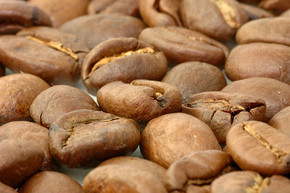Brief introduction of Burundian coffee and producing areas. How about Burundian coffee?
Follow the caf é (Wechat official account vdailycom) and found that Beautiful Cafe opened a small shop of its own.
Burundi, the heart of Africa.
According to the statistics of the World Bank in 2011, about 600000-800000 families in Burundi depend on coffee for a living, and coffee is the core of Burundi.
East Africa has always been a high-quality coffee civilization, and Burundi is no exception. This landlocked African country with a heart-like outline, with excellent volcanic soil, a varied microclimate, and nearly 1200 millimeters of annual rainfall, all of which provide excellent prerequisites for coffee cultivation.

Despite armed conflict and high poverty rates, coffee production with this effect is still increasing year by year, and at present, individual coffee has higher market potential, and coffee growers and producers are working to improve the quality of Burundian coffee.
Generally speaking, Burundian coffee is mainly bourbon, with other variants (such as Jackson and Blue Mountain), which are grown from 700m to 2700 m above sea level, which produce brighter acidity and lemon flavours, while flavors such as passion fruit, pineapple, flower and honey, can reach above SCA 86 points, while coffee at lower altitudes has a thinner texture and more chocolate and hazelnut flavors.
Like other East African countries, Burundian coffee has its own special treatment, that is, double washing (or double fermentation), and the coffee after such treatment will have an extremely grateful taste and bright flavor.
Washed coffee cherries
Coffee beans before shelling
Burundian coffee mainly comes from the following five major producing areas, namely Buyenz, Bugesera, Bweru, Kirimiro and Mumirwa. Although there are other small producing areas, these regions are the most famous for their coffee.
Buyenzi
The largest coffee producing area in the country, bordering Rwanda. Two specific areas, Cayanza Kayanza and Nogoz Ngozi, are the most famous.
The climate in the Cayanza area is extremely mild, with an average temperature of 18 °C, and most small farm estates are located between 1700 and 2000 meters, with the dry season in summer. Coffee from Cayanza scored a high score of 91.09 in the 2015 COE competition.
Nuoguoz is located in the northeast of Burundi, which is similar to the elevation of Cayanza. Although its output is less than that of Cayanza, it has also shown great potential for quality in recent years. In the 2015 COE competition, its best batches scored 88.92%, while other batches from the region also scored more than 85%.
Coffee from Cayanza is drying in the sun.
Kirundo, Bugesera
In northeastern Burundi, the yield is low, but the development potential is good; at an altitude of about 1400-1700 meters, the best score for COE in this producing area is 86.62m.
Muyinga, Bweru
Another producing area in northeastern Burundi bordering Tanzania. The average elevation is 1800 meters above sea level and has its typical Burundian characteristics: mild climate, volcanic soil and high rainfall.
Gitega, Kirimiro
Located in the mountains of central Burundi, the average temperature is 12-18 °C. The annual rainfall is about 1100pp, which is lower than that in other producing areas.
In addition to COE award-winning coffee, this producing area also has a professional coffee laboratory that focuses on the quality control of exported coffee.
Bubanza, Mumirwa
Located in the north of Burundi, bordering Luwanda and the Democratic Republic of the Congo, 1100-2000 meters above sea level, the average temperature is 12-18 °C, and the annual rainfall is about 1100pp.
Important Notice :
前街咖啡 FrontStreet Coffee has moved to new addredd:
FrontStreet Coffee Address: 315,Donghua East Road,GuangZhou
Tel:020 38364473
- Prev

Where is the origin of Ugandan coffee? a brief introduction to Ugandan coffee
Following Kaiping (Wechat official account vdailycom) found that the Beautiful Cafe opened a small shop of its own, java, the fourth largest island in Indonesia, and the capital Jakarta is located on the northwest coast of Java. In addition, Java is the name of a computer language. Because Java is rich in the famous Java coffee, the computer language is
- Next

Introduction of climate, altitude, taste and flavor in Burundian coffee producing area
Following Kaibei (official Wechat account vdailycom) found that the Beautiful Cafe opened a small shop of its own Burundi is located on the south side of the equator in east-central Africa. It is bordered by Rwanda to the north, Tanzania to the east and south, Congo (Kinshasa) to the west, and Lake Tanganyika to the southwest. There are many plateaus and mountains in the territory, most of which are made up of the plateau on the east side of the East African Rift Valley, with an average elevation of 1600 meters above sea level.
Related
- Detailed explanation of Jadeite planting Land in Panamanian Jadeite Manor introduction to the grading system of Jadeite competitive bidding, Red bid, Green bid and Rose Summer
- Story of Coffee planting in Brenka region of Costa Rica Stonehenge Manor anaerobic heavy honey treatment of flavor mouth
- What's on the barrel of Blue Mountain Coffee beans?
- Can American coffee also pull flowers? How to use hot American style to pull out a good-looking pattern?
- Can you make a cold extract with coffee beans? What is the right proportion for cold-extracted coffee formula?
- Indonesian PWN Gold Mandrine Coffee Origin Features Flavor How to Chong? Mandolin coffee is American.
- A brief introduction to the flavor characteristics of Brazilian yellow bourbon coffee beans
- What is the effect of different water quality on the flavor of cold-extracted coffee? What kind of water is best for brewing coffee?
- Why do you think of Rose Summer whenever you mention Panamanian coffee?
- Introduction to the characteristics of authentic blue mountain coffee bean producing areas? What is the CIB Coffee Authority in Jamaica?

